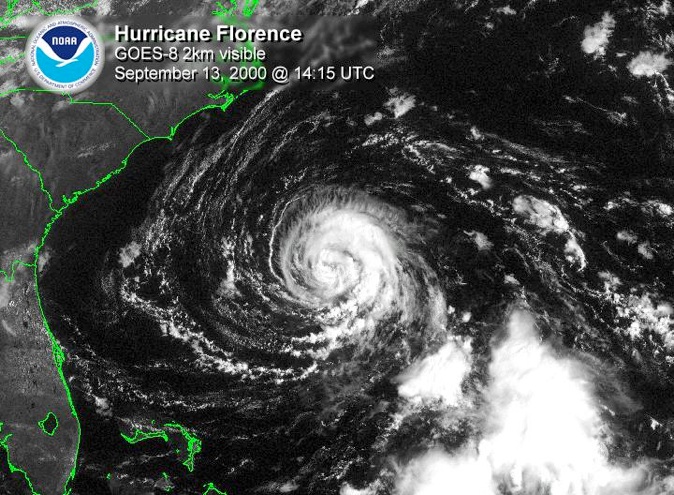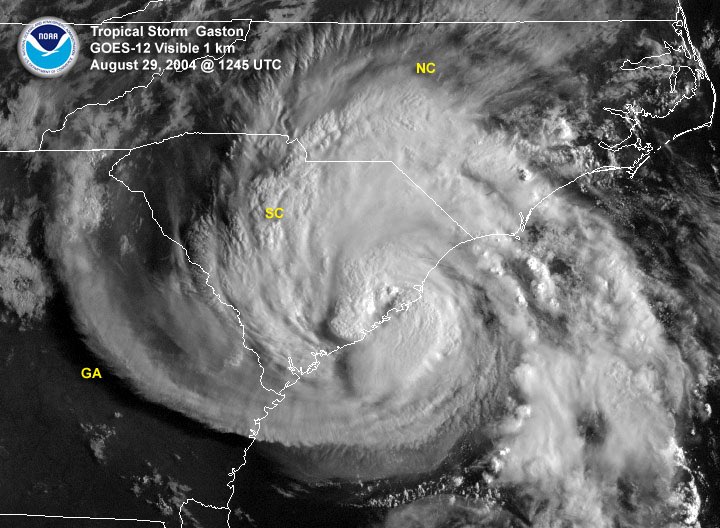Atlantic Hurricanes


RTN

.
Here we are anchored near a 43 foot sport fisherman belonging to a friend.
We were required to evacuate the barrier Island. All of Charleston left town and the roads were jammed up for days and nothing moved. I took the back roads out of town.
When I returned the sport fisherman was nowhere to be seen. It had dragged and was on the lee shore. Two boats were sunk at the docks. Two others were swept into the reedy bank.
My boat was dry and suffered no damage and of course it hadn’t moved from its spot. This was Oct 16-17, 1999. We moved onto the sailboat hoping to leave in November but the weather was not good until May 2000.

The eye here is just north of us in St. David’s. We were protected by reefs and the swell was quite small. Winds on the deck never exceeded 35 kts, and pull on the rode less than 300 lbs. I was out in the rain with anemometer and fish scale measuring things.
Notes on wind values quoted by the media.
The standard synoptic height is 10 meters above the land or sea level. When the weather forecaster quotes a wind speed of 64 kts, he refers to the wind at 10 meteres (33 feet.) At deck level it might be only 30 kts, and the pull on the boat will be quite moderate.
Wind speed drops as the wind drags across the seas. It is lowest in the troughs and only blows hard on the crests of the waves. A seagull sitting on the sea will hardly feel any wind except on the crest of the wave.
The next tropical storm we encountered was in Carriacou. We were hauled out, and safely in the boat yard. Other boats moved into the mangroves and the bay was deserted as we waited for the storm to go through. Luckily it missed us and all we got was rain.

That same summer a hurricane wiped out most of Grenada which had left the summer before, and which we all thought was hurricane proof. More than 70% of the buildings were damaged and many boats were thrown ashore. Those on blocks in boat yards were blown over. An acquaintance was drowned and his power boat lost. My friends woodworking business was destroyed. Most boats that survived were anchored on sandy bottoms in a sheltered bay.
During the next seven years we were shore bound and constantly nervous about hurricanes. By 2013 we were fed up with preparing two boats for hurricanes, so we sold one and moved the sailboat to a big sailing lake 250 miles inland.
But let’s look back at the time before all these experiences when we were preparing the boat for its next adventure.



